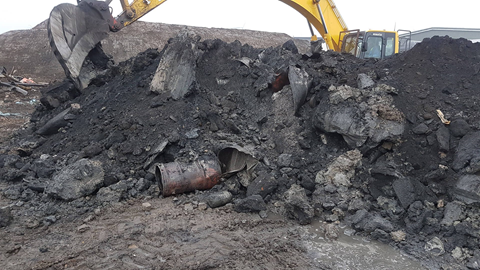Step 1: Study
A desktop study reviews historical records and old maps, as well as an examination of the list of contaminated land owned by the local authority together with notes of landfill sites nearby (within 250 m).
If the desk study indicates a likelihood of contamination, it is recommended that a soil investigation is carried out.

Step 2: Research Soil
Samples will need to be taken from trial holes taken from various spots on the site. These will be sent for laboratory analysis and reports compiled from the results.
Step 3: Remediation
Removing the contaminated soil is the most common solution, but a license to bring it to the landfill will be needed. The soil depth to be disposed of will need to be approved, as well as the methods of removal and agreement to replace with fresh topsoil.
If it is not replaced, then the treatment of other improvements may be needed. A blanket approach is not always appropriate for the entire site.
If there are certain hotspots on the plot, they can be removed with a mass excavation and a filling of the area with topsoil, or they may be covered by a hard-surface road, be diluted or bio-treated.
It is the job of a specialist contractor with British Standard documentation to decide how it should be done. There is a possibility that continuous long-term monitoring of the land will be needed, especially where groundwater contamination is a risk. For a Soil Remediation Service, visit Soilfix, suppliers of Soil Remediation Services.

Step 4: Validation
The end step is about proving that the site has been remediated and is suitable for future use. Proof is required to remove the limitations on the planning permission and obtain a certificate of completion from the Building Control authority.
